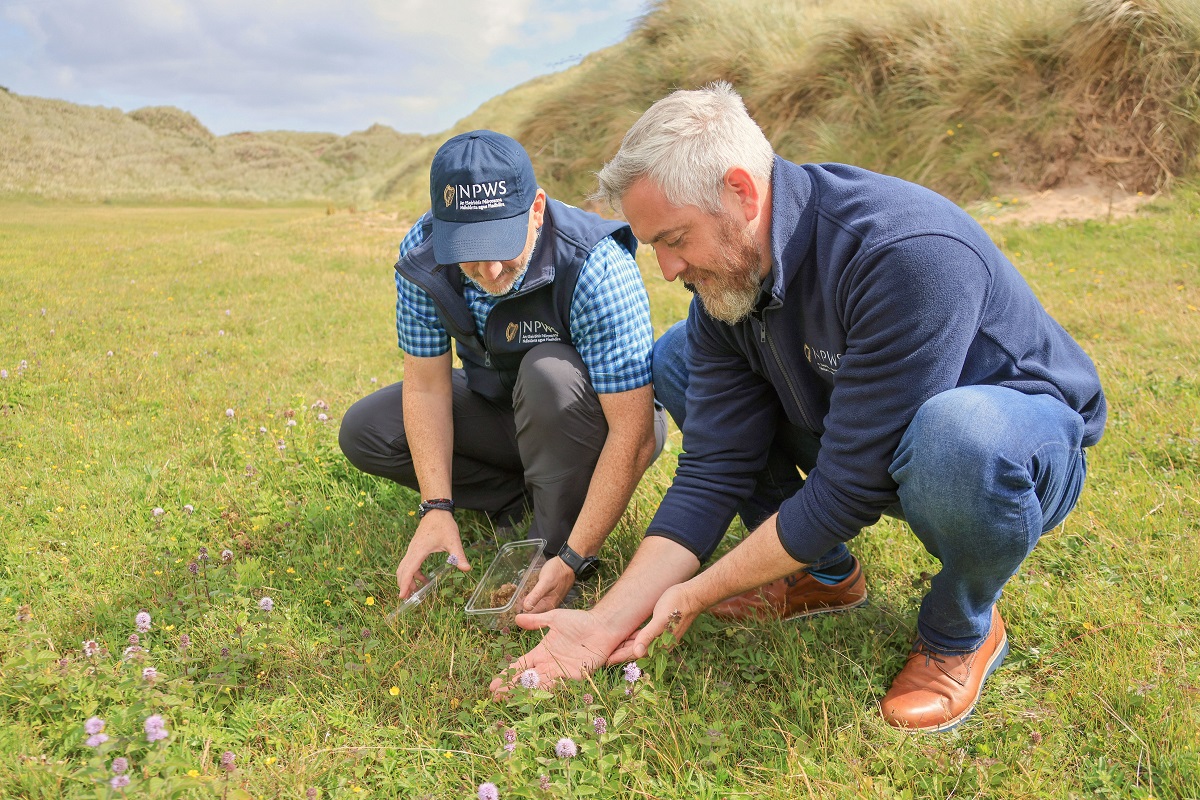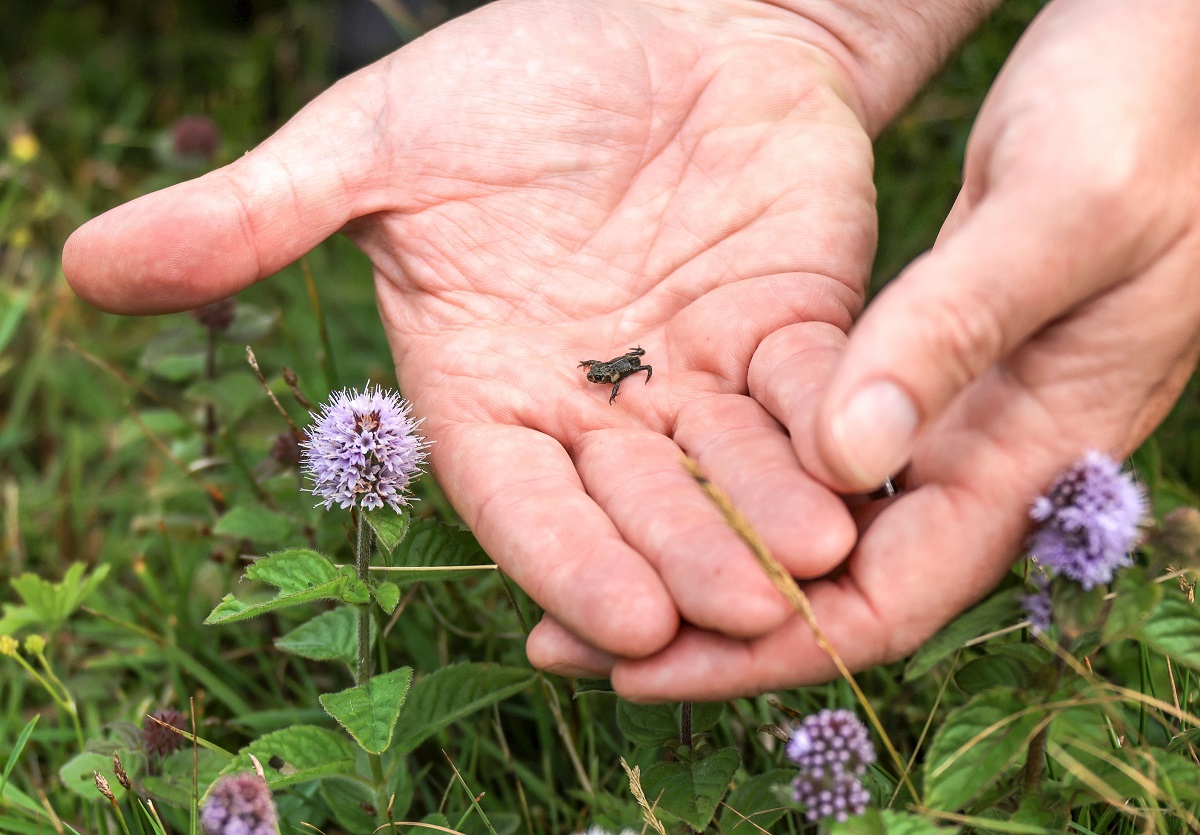News
Minister O’Sullivan releases rare Natterjack Toads into the wild in Co. Kerry
Date Released: Friday, August 8, 2025
- A joint project between National Parks and Wildlife Service (NPWS) Fota Wildlife Park and Oceanworld, Dingle has to date released over 13,000 juvenile natterjacks back into the wild since 2016
- This year 2,000 toadlets have been released around Castlemaine and Castlegregory, Co. Kerry
Minister of State for Nature, Heritage and Biodiversity Christopher O’Sullivan was in Castlegregory Co. Kerry today (August 8th) to release Natterjack Toadlets back into the wild. The Natterjack Toad is an endangered species, unique to the coastal area of Castlemaine Harbour and Castlegregory in Co. Kerry. Since 2016, the National Parks and Wildlife Service have been working with Fota Wildlife Park and Oceanworld Dingle on a conservation project which aims to enhance the survival prospects of the species and prevent its further decline.
Speaking at the release, Minister of State for Nature, Heritage and Biodiversity Christopher O’Sullivan said:
“It’s wonderful to be here to watch this year’s Natterjacks returned to their natural habitat in Castlegregory, and to join the local community at this annual homecoming. The Natterjack really needs our help, as it is a ‘boom or bust’ species with varying breeding success each year. This headstarting programme provides a much needed boost to its small population. NPWS, Fota Wildlife Park and local conservation groups like the Maharees Conservation Association are working together to steer the species towards recovery in the coming years and decades and I would like to thank them for their collective efforts.”

Minister O'Sullivan releasing Natterjack Toadlets
The Natterjack population has declined over time due to land reclamation and as agricultural practices changed. When they are released back into the wild, Natterjacks typically breed in shallow sunny ponds to avoid predators.
This conservation project involves NPWS staff collecting spawn from ponds, which are brought to Fota Wildlife Park where they are cared for and reared in special holding tanks. This approach, known as headstarting has been shown to reduce their mortality rate to as low as 25%. Following metamorphosis, the toadlets are returned to the wild in Kerry.
Aileen Tennant, Director of Fota Wildlife Park said:
“The vital partnership which Fota Wildlife Park has with the NPWS for the population support programme for the natterjack toad, one of Ireland’s most endangered amphibians, is emblematic of the conservation work we do. At Fota Wildlife Park, we contribute to 65 breeding programmes for threatened species around the globe, but it’s especially meaningful to play a role in protecting native species. Fota Wildlife Park supports native species conservation through breeding and headstarting programmes, education and raising public awareness for the curlew, dunlin, corncrake, and the natterjack toad. These species are part of our natural heritage and deserve every chance to thrive. This year’s release of over 2,000 toadlets, bringing to over 13,000 toadlets since the headstarting programme began in 2016, is a testament to the power of these collaborative conservation efforts.”
Danny O’Keefe, Regional Manager, NPWS said:
“The Natterjack is a species unique to this area and the annual release of toadlets always generates huge enthusiasm among communities here around the coast of Kerry. The quality of the habitat is an important factor in the survival of the species long term. I would like to pay tribute to the Maharees Conservation Association, Oceanworld Dingle and other local groups for their efforts in conservation of the beautiful dunes and local biodiversity here in Kerry.”
Kevin Flannery, Director of Oceanworld, Dingle, said:
“I am delighted to be involved with this important conservation project. My colleagues and I at Oceanworld Dingle have a long association with NPWS and this vital conservation initiative and we look forward to that collaboration continuing. Its importance for the species and the local habitat cannot be overstated.”


